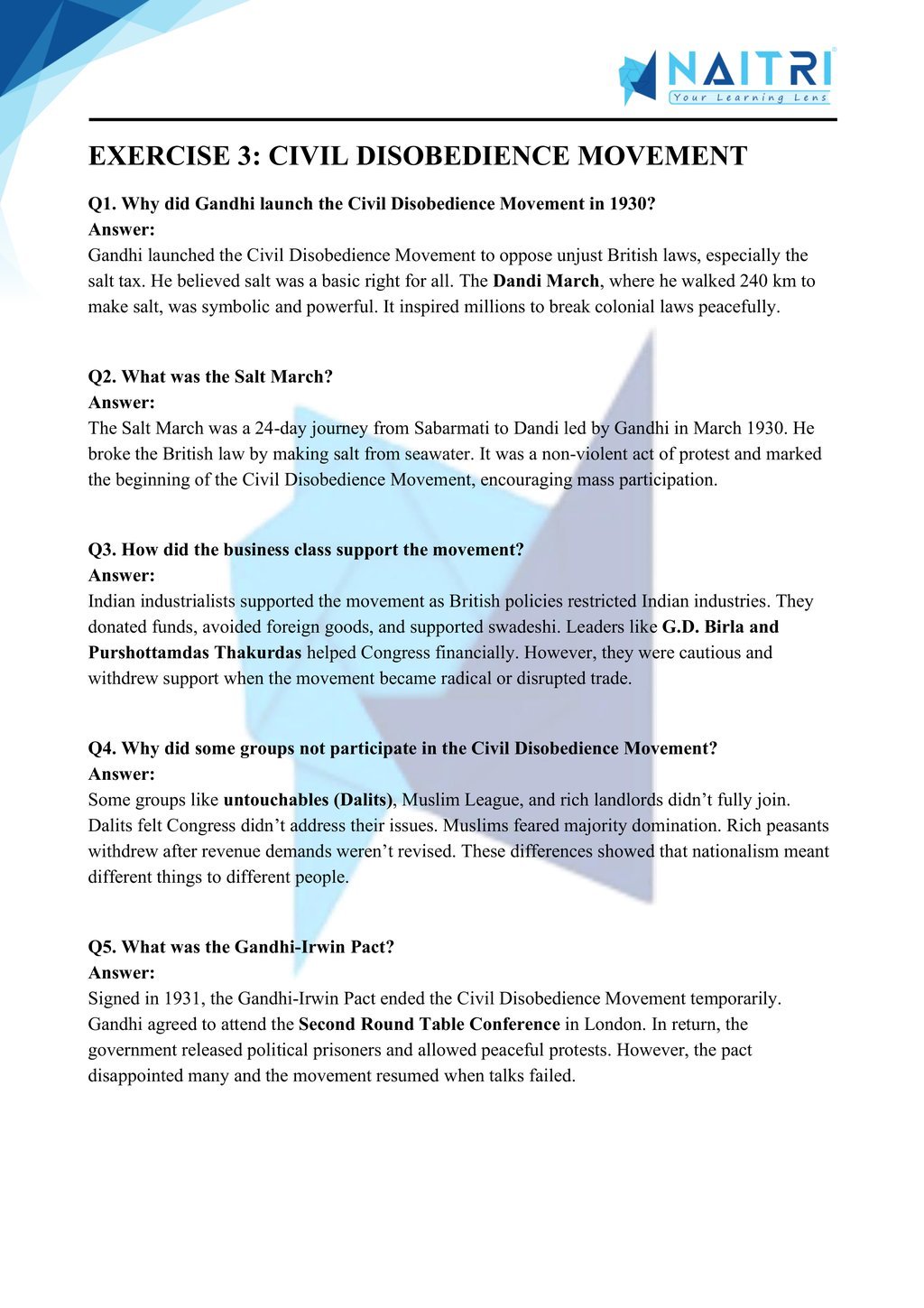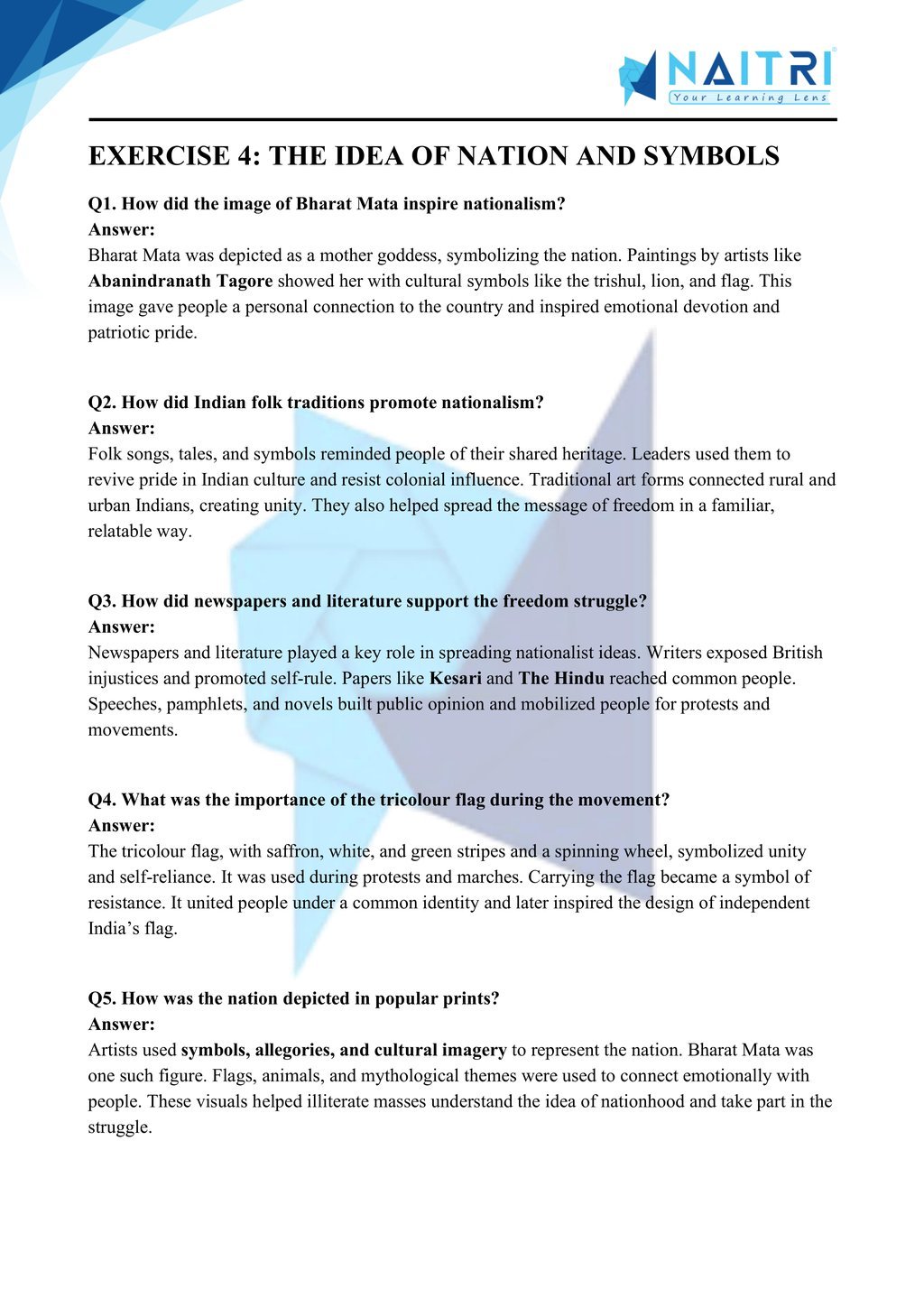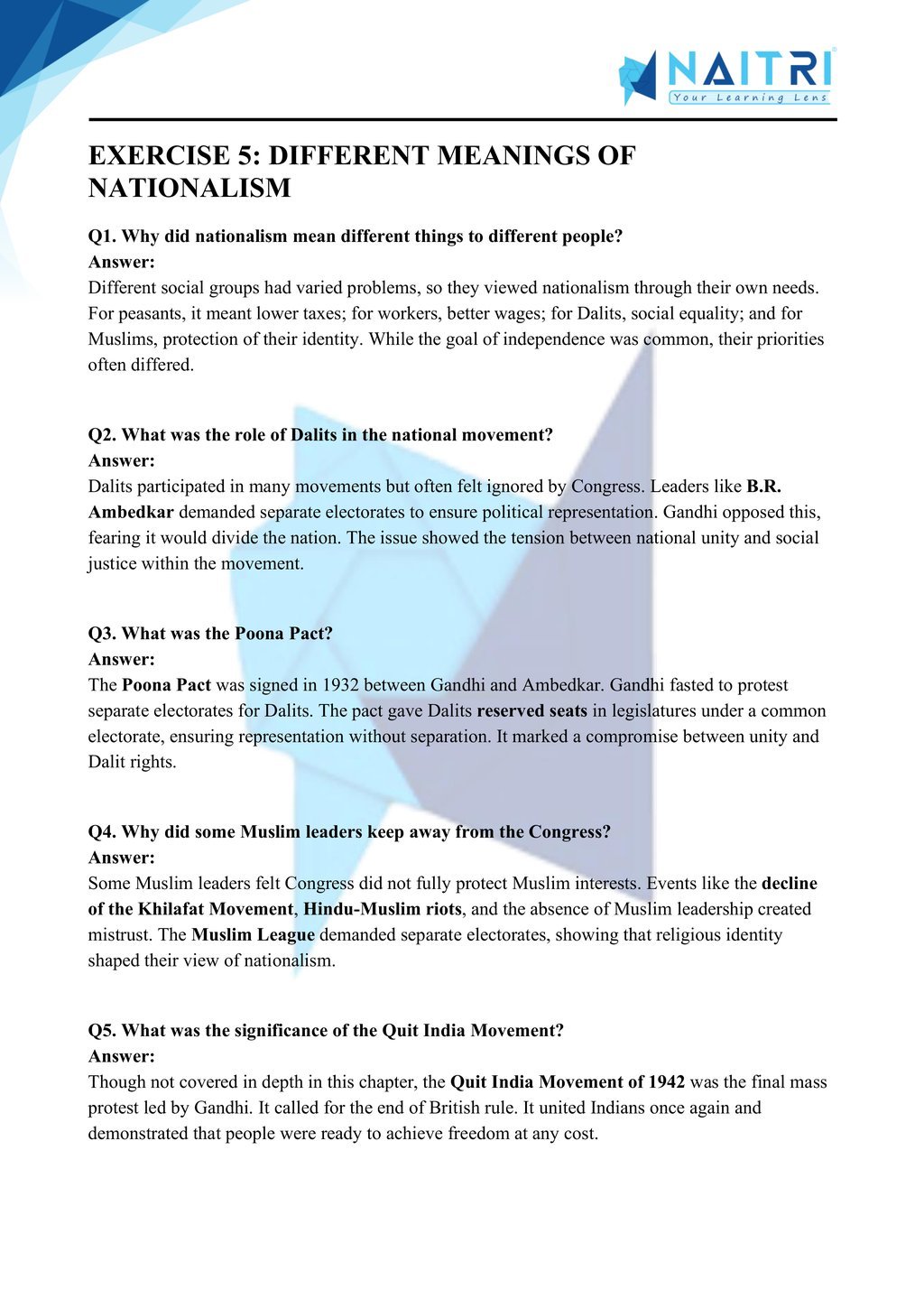MP Board Solutions for Class 10 History Chapter 2 – Nationalism in India
MP Board Solutions for Class 10 History Chapter 2 – Nationalism in India are essential for understanding India’s freedom movement in the MPBSE curriculum. These well-structured answers help students grasp topics like the Non-Cooperation and Civil Disobedience Movements, the role of Mahatma Gandhi, and the contribution of various sections of society to the national struggle. Designed as per the latest syllabus, these solutions strengthen conceptual clarity and improve exam preparation. Ideal for revision and practice, they provide insights into India’s national awakening, making them a valuable study tool for scoring well in Class 10 Social Science exams.
MP Board Solutions For Class 10 History – Nationalism in India – Exercise Images





Experience History Like Never Before – With AR!
Understanding Nationalism in India is now more exciting and immersive! With the NAITRI App, you can explore complex history concepts through Augmented Reality (AR). See movements grow, leaders inspire, and India’s freedom struggle unfold — right in front of you. Our AR-powered lessons make learning interactive, 3D, and fun, helping you retain concepts better and enjoy every topic.



Visualize . Interact . Understand . The future of learning is here
Nationalism in India – Important Questions with Answers
What was the Rowlatt Act of 1919?
Answer: The Rowlatt Act authorized the British government to arrest anyone without trial. It curtailed civil liberties, angered Indian leaders, and united people against injustice.Why was the Jallianwala Bagh massacre a turning point?
Answer: The massacre shocked the entire nation. It revealed the brutality of British rule and led to mass protests, strikes, and a renewed call for freedom.What is the meaning of Satyagraha?
Answer: Satyagraha is a method of non-violent protest developed by Gandhi. It involves peaceful resistance to injustice, based on truth, courage, and moral strength.Why did Gandhiji support the Khilafat Movement?
Answer: Gandhi supported the Khilafat Movement to unite Hindus and Muslims. He believed joint efforts against British rule would strengthen the freedom movement in India.What was the purpose of the Non-Cooperation Movement?
Answer: It aimed to withdraw cooperation from the British by boycotting foreign goods, institutions, and titles, and to promote self-reliance and Indian industries.Why did the Non-Cooperation Movement slow down in cities?
Answer: The movement slowed because people began returning to government schools, imported cloth was cheaper, and alternative institutions were not widely available.What role did peasants play in the nationalist movement?
Answer: Peasants protested against high taxes, unfair landlords, and the colonial government, aligning with the Congress to demand justice and better conditions.What was the Chauri Chaura incident?
Answer: In 1922, protesters clashed with police in Chauri Chaura. Violence erupted, and a police station was burned, prompting Gandhi to call off the movement.What is the significance of the Dandi March?
Answer: The Dandi March launched the Civil Disobedience Movement. Gandhi marched 240 km to break the salt law, defying colonial rule through peaceful protest.How did the Civil Disobedience Movement differ from Non-Cooperation?
Answer: Civil Disobedience included breaking laws like salt tax, refusing to pay taxes, and picketing, while Non-Cooperation focused on boycotts and withdrawal from British institutions.Why was salt chosen as a symbol of protest?
Answer: Salt was a common necessity, and its tax affected everyone. Protesting it united people across classes and exposed the British government’s oppression.How did women contribute to the national movement?
Answer: Women participated in pickets, marches, and protests. They faced arrests, broke social norms, and helped strengthen the movement’s reach and visibility.Why did the Dalits feel excluded from the nationalist movement?
Answer: Dalits felt ignored by Congress. Leaders like Ambedkar demanded separate electorates, believing the upper-caste dominated Congress didn’t represent lower-caste interests.What was the Poona Pact of 1932?
Answer: It was an agreement between Gandhi and Ambedkar. Separate electorates were dropped, but reserved seats were provided for Dalits in provincial legislatures.Why did Muslim leaders not fully support the Congress?
Answer: Muslims feared Hindu majority domination and felt underrepresented. This led to increased support for the Muslim League and demands for separate identity.What was the Simon Commission?
Answer: A British committee with no Indian members sent in 1928 to discuss constitutional reforms. Its arrival was met with nationwide protests.What was the importance of the Lahore Session of 1929?
Answer: The Congress declared Purna Swaraj (complete independence) as its goal and decided to observe 26 January 1930 as Independence Day.How did industrialists support nationalism?
Answer: They supported boycotts of British goods, funded national leaders, and aimed to promote Indian industries to reduce foreign dependence.How did tribal communities view the movement?
Answer: Tribals opposed forest laws and joined nationalist protests, viewing them as ways to regain rights over forests and land.What was the impact of nationalism on plantations workers?
Answer: Plantation workers joined the movement hoping to return home. However, due to poor communication, many were left stranded, feeling disillusioned.What does ‘Swaraj’ mean?
Answer: Swaraj means self-rule, where Indians govern themselves without British control, ensuring freedom, dignity, and equal opportunity for all citizens.How did the national movement promote unity?
Answer: It encouraged people from different regions, religions, and castes to unite under one cause through shared symbols, slogans, and mass mobilization.How did cultural symbols promote nationalism?
Answer: National flags, songs, images of Bharat Mata, and festivals were used to foster pride, build unity, and create a collective national identity.What role did the press play in nationalism?
Answer: The Indian press spread nationalist ideas, reported injustices, and connected leaders and citizens, helping to organize movements and resistance.Why is this phase of nationalism important today?
Answer: It shows the strength of non-violence, unity, and mass participation in achieving freedom, inspiring future generations to defend justice and democracy.
Nationalism in India examines the growth of the Indian national movement during the early 20th century. It highlights key events like the Non-Cooperation and Civil Disobedience movements led by Mahatma Gandhi. The chapter discusses the role of peasants, tribals, industrial workers, and women in the freedom struggle. Through maps, visuals, and firsthand accounts, students understand how a collective national identity emerged from diverse regional experiences.
Download Naitri App
Easy, Visual Learning — Right on Your Phone
Learn with Augmented Reality! The Naitri app makes CBSE and MP Board concepts interactive and fun — even in low-resource settings. Watch lessons, complete homework, take tests, and track progress — all in one place. Anytime. Anywhere.
Available on








